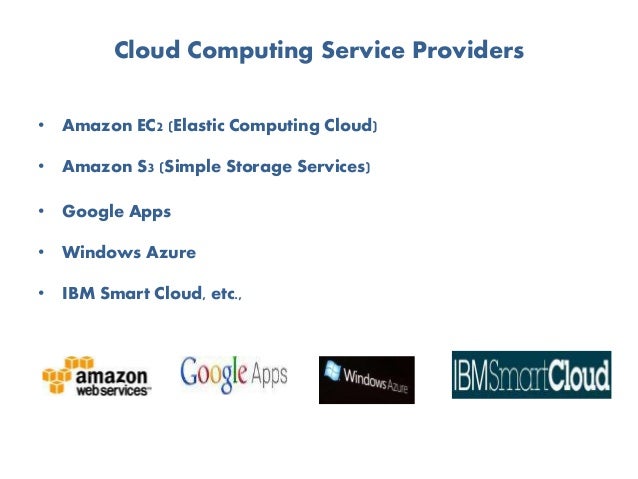
Image source: https://image.slidesharecdn.com/cloudcomputingforcollegelibraryautomation-gulbarga-150201061509-conversion-gate01/95/can-cloud-computing-help-for-government-colleges-to-automate-their-libraries-a-point-of-view-15-638.jpg?cb=1422792982
With the increase in quantum of transactions on a daily basis, you need more space to store your ever increasing data in a well-protected way. As a result, the demand for Cloud Computing service providers has been on an upsurge. Companies are paying heftily to such IT service providers to buy virtual space and for managing their database. But the million-dollar question is: are these companies getting a bang for the buck through this enormous expenditure? Do they really need the resources theyre paying for? And how can MSP help to reduce wastage on cloud resources?
The Extent of Expenditure with Cloud Computing
Cloud computing was evolved as a medium and a helping platform for companies to store and share their data in the cloud instead of their own hard drive. This saved them a lot of money which wouldve been otherwise wasted in the purchase of more storage devices and salary expenditure of personnel. With a 99.99% uptime availability and improved mobility, cloud computing has become the best option available for any business. If the reports are to be believed, $734 billion is the estimated size of cloud market and out of that, the public cloud makes up for 28%. As per the latest survey, average process efficiency has increased by 18.8% and its operational cost has been curtailed down by 16.18% which justifies the success of cloud computing.
Computing resources which ought to be prominently used for the purpose of database storage are put to use for nonproductive purposes like testing and staging. These types of ancillary functions do not require systems engagement continuously for 24 hours increasing the opportunity costs for such systems. Companies are paying for such services but not using it. This doesnt just inflate their expenditure, but unnecessarily occupies the virtual space which could have been put to productive uses.
MSP as the Right Alternative
With the advent of cloud computing, the world saw the emergence of Managed Service Providers (MSPs) who manage their clients IT functions from a remote location. Earlier small and mid-sized businesses used to hire MSPs because of insufficient in-house IT infrastructure. However, voluminous tasks and limited budget have forced even big names to resort to MSP culture. MSPs earn a considerable portion of their income from such businesses. Even then, would such MSPs dig their own grave by advising their clients to reduce their expenditure on cloud services leading to a fall in their own turnover? Its something like a hotel organizing a diet campaign. Yes, MSPs have realized the fact that their success lies in consumers satisfaction. Instead of trying to extract as much money as possible from the clients, counseling them and teaching them efficient ways to select for cloud services seem to be more consumer attracting activity. This is their new business motto. They can help their clients to analyze their priorities so that they channelize their funds for availing productive cloud services. When the customers are getting more value of services per dollar, they would definitely want to cling on to their MSPs. Plus, managed services providers and their tools can help clients choose the most affordable cloud solution by performing cloud costs comparison, analytics, etc.
Another major change that MSPs are witnessing is that customers want to control their cloud services well within their infrastructure. This ensures them of the confidentiality and convenience to keep an eye on the work. If they have some information which is not supposed to be made public, the public cloud isnt the safest option. They would obviously want their data to remain under their nose. This gave rise to Self Service cloud computing wherein a customer can access stored data and launch any application without having to request any MSP.
This type of cloud computing requires a high level of planning as a service provider must be able to design the service in such a way that all the clients requests are fulfilled automatically. Self-service tools in cloud environments help the clients to reduce dependency on external cloud infrastructure. It is estimated that 60% of total cloud work will be done through Software-As-A-Service (SAAS) - cloud monitoring tools for different public clouds such as Azure, AWS or Google cloud. Customized software would be provided to the clients and they would control their cloud services using that piece of software installed in their own infrastructure. Now, every client can control and perform various tasks flexibly. This self-service cloud enables a service provider to ensure regulatory compliance keeping in mind its clients privacy.
Conclusion
Consumers have become more conscious regarding their expenditure as to where and how to spend money on cloud services. This could be marked as the beginning of a new era of cloud computing where computing services are offered with minimal of any resource wastage and a major step towards green cloud computing.